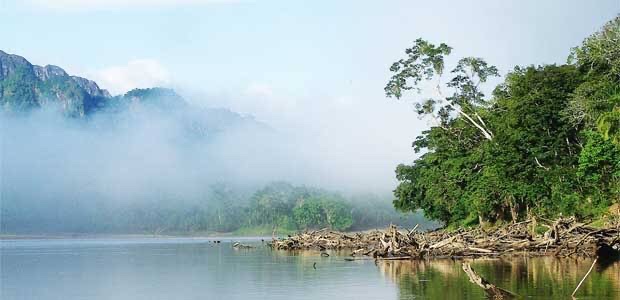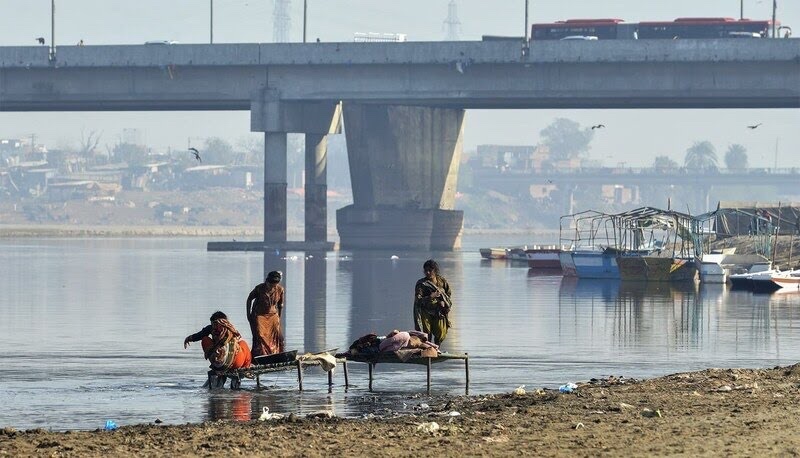The University of York has discovered that Punjab’s River Ravi is one of the world’s most polluted rivers, with pharmaceuticals and active pharmaceutical substances tossed into it posing a “danger to the environment and human health.”
The Ravi River in Pakistan has been identified as the world’s most polluted river. This river’s water has been proven to contain the most hazardous germs. The La Paz River in Bolivia is ranked second on the list of the world’s most polluted rivers (Most Polluted Rivers in the World in 2022), and the river system of Addis Ababa in Ethiopia is ranked third.

Given the degree of pollution in the rivers, a team of researchers from York University River Pollution Study has also issued a strong warning to the community living along their banks.
The degree of pollution in Bangladesh’s waterways has also been determined to be many times greater than usual.
According to the Report of Dawn, The University of York evaluated 1,052 samples from 258 places in 104 countries on all continents to assess the presence of medications such as paracetamol, nicotine, caffeine, and traces of epilepsy and diabetes.
In a global study on pharmaceutical pollution Lahore tops the charts. This points to 3 things: 1) A total lack of wastewater treatment capacity, 2) A free-for-all in terms of medicine/ antibiotic over the counter availability. 3) Continued apathy viz environ. & pharma oversight. pic.twitter.com/9fT2YBgAmV
— Imran Khalid (@imran2u) February 15, 2022
Afia Salam, a Pakistani environmentalist, compared Ravi to a sewer filled with human and industrial garbage, expressing her dissatisfaction with the study’s conclusions. She also expressed concern over the existing government’s plans to create a metropolis on the riverbed (the Ravi Riverfront Urban Development Project), which would increase river pollution.
لہور لہور اے۔۔لہور لہور اے
— afia salam (@afiasalam) February 15, 2022
Tops in polluted water, tops in poor Air Quality
لگے رہو منا بھائ https://t.co/eCgmlZphZu
“In addition, India is causing problems for the Ravi by diverting the Hudiyara drain into the Ravi,” she told to media.
Furthermore, according to a report by the Asian Development Bank on the River Ravi Revitalization Plan, the river and its streams pose a “severe threat to the health” of the people who live in its basin. “Widespread contamination” meant that water-borne and water-washed (skin) disorders were frequent among people of all ages. If nothing is done, sickness would most likely spread even faster.”
According to the research, rapid urbanisation increased industrialization, and untreated wastewater has led significant amounts of wastewater and harmful effluents to flow directly into Ravi from cities such as Lahore, Faisalabad, and Sheikhupura.
“We have rules concerning dumping wastewater and industrial trash, but none of them is being implemented in the country,” Salam said, adding that if the government does, the in-ground and river water will improve.
According to the study, the Ravi river, which flows from Lahore, Punjab’s capital, contained an average of 70.8 micrograms per litre of these narcotics, with one sample containing 189 micrograms per litre.
The La Paz River in Bolivia is ranked second.
According to the report, Bolivia’s La Paz River is the second most polluted, with an average of 68.9 micrograms per litre of these narcotics in its water. These contaminants have a concentration of 51.3 micrograms per litre in Ethiopia’s capital Addis Ababa’s river system. The state of rivers in low and middle income countries is determined to be quite poor in this study. In metropolitan areas, however, problems such as waste dumping along riverbanks, a lack of water treatment plants, and sewer water spilling into rivers have been discovered.


